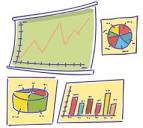Introduction
Statistics is the study of the collection, organization, analysis, interpretation, and presentation of data.It deals with all aspects of this, including the planning of data collection in terms of the design of surveys and experiments.A statistician is someone who is particularly well-versed in the ways of thinking necessary to successfully apply statistical analysis.
There are many types of statistics career opportunities for people with degrees in this discipline. Though statisticians are employed in some places after receiving an undergraduate degree, statisticians with advanced degrees are more sought after and often better prepared for one or more of the various positions available. Statisticians may be employed in a variety of different industries, but the most common statistics career opportunities are in the fields of business and industry, health care, and governmental organizations. In many cases, statisticians will specialize in a certain area of statistics in order to better prepare themselves for these different types of careers.
Type of statistics
Qualitative data
Qualitative data is a categorical measurement expressed not in terms of numbers, but rather by means of a natural language description. In statistics, it is often used interchangeably with “categorical” data.
For example: favorite color = "blue"
height = "tall"
Although we may have categories, the categories may have a structure to them. When there is not a natural ordering of the categories, we call these nominal categories. Examples might be gender, race, religion, or sport.
When the categories may be ordered, these are called ordinal variables. Categorical variables that judge size (small, medium, large, etc.) are ordinal variables. Attitudes (strongly disagree, disagree, neutral, agree, strongly agree) are also ordinal variables; however we may not know which value is the best or worst of these issues. Note that the distance between these categories is not something we can measure.
Quantitative data
Quantitative data is a numerical measurement expressed not by means of a natural language description, but rather in terms of numbers. However, not all numbers are continuous and measurable. For example, the social security number is a number, but not something that one can add or subtract.
For example: favorite color = "450 nm"
height = "1.8 m"
Quantitative data always are associated with a scale measure.
Probably the most common scale type is the ratio-scale. Observations of this type are on a scale that has a meaningful zero value but also have an equidistant measure (i.e., the difference between 10 and 20 is the same as the difference between 100 and 110). For example, a 10 year-old girl is twice as old as a 5 year-old girl. Since you can measure zero years, time is a ratio-scale variable. Money is another common ratio-scale quantitative measure. Observations that you count are usually ratio-scale (e.g., number of widgets).
















